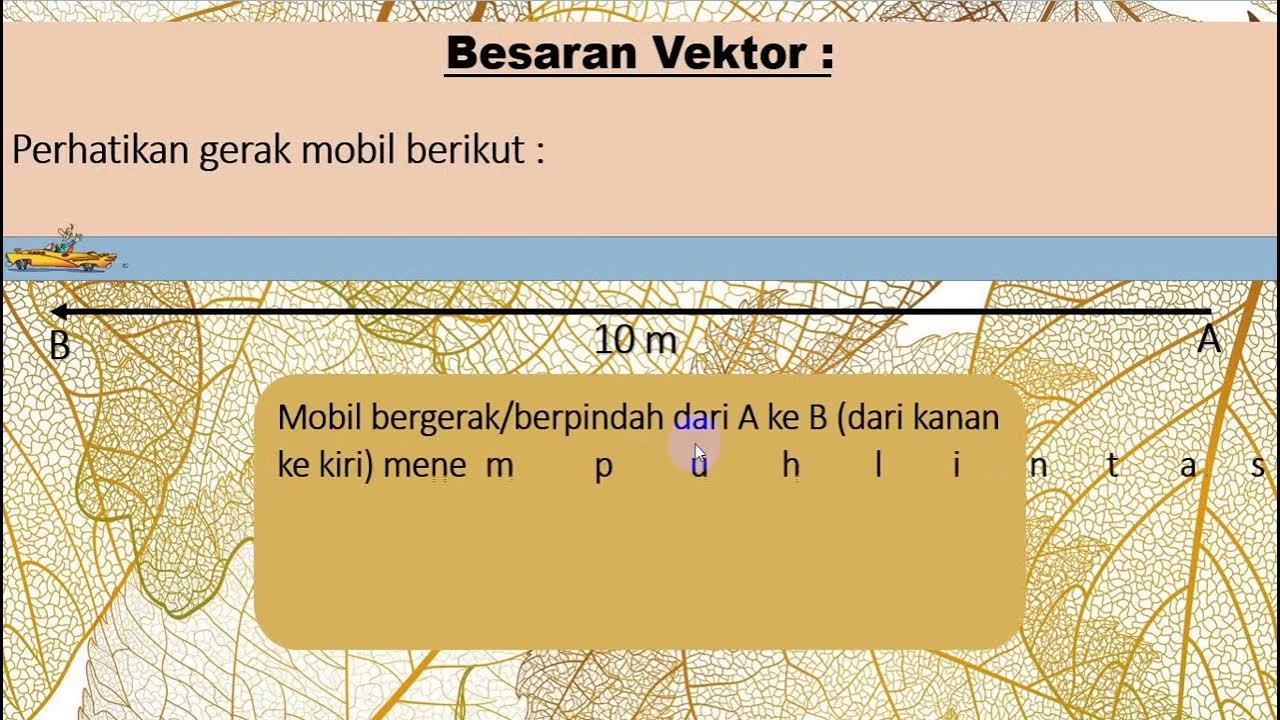Scalars and Vectors
Summary
TLDRThis lesson on scalars and vectors explores fundamental concepts in AQA A Level Physics. It distinguishes between scalar quantities, which have only magnitude (e.g., mass and energy), and vector quantities, which include both magnitude and direction (e.g., velocity and force). The video outlines methods for adding vectors, including scale diagrams, the Pythagorean theorem for perpendicular vectors, and the parallelogram method for non-right angles. Understanding these principles is essential for grasping mechanics in physics, as they provide the foundation for analyzing physical phenomena.
Takeaways
- 😀 Scalars are quantities that have only a magnitude, such as mass, temperature, and time.
- 📏 Vectors are quantities that have both magnitude and direction, like weight, velocity, and force.
- 🔄 Some quantities have both scalar and vector counterparts, for example, speed (scalar) and velocity (vector).
- ➕ To add vectors, a scale diagram must be drawn, showing the size and direction of the resultant vector.
- 📐 The resultant vector is the straight line distance from the start to the end of the vector diagram.
- 📊 When drawing scale diagrams, the tail of one vector must touch the head of another.
- 🛠️ Pythagoras' theorem can be used to calculate the resultant vector when two vectors are at right angles to each other.
- 📏 The lengths of vectors in a scale diagram should be accurately represented according to the chosen scale.
- 📐 Angles of vectors can be measured from either the vertical or horizontal axis, though vertical is often easier.
- 📝 Calculations for vector addition may be limited to right-angled vectors, while scale diagrams can accommodate angles beyond 90 degrees.
Q & A
What is the primary focus of the lesson on scalars and vectors?
-The lesson aims to define and sum scalars and vectors, highlighting their differences and how to work with them in physics.
What are scalars and how do they differ from vectors?
-Scalars are quantities that have only magnitude (size) and no direction, such as mass, temperature, time, energy, and length. In contrast, vectors have both magnitude and direction, including quantities like weight, momentum, velocity, force, and acceleration.
Can you give examples of scalar and vector quantities?
-Examples of scalar quantities include speed and distance, while vector quantities include velocity and displacement.
How is the direction of a vector represented?
-The direction of a vector can be represented using positive or negative signs, angles from a reference axis, or bearings measured clockwise from the north.
What is a resultant vector?
-A resultant vector is the overall vector that results from adding two or more vectors together, representing the combined effect of those vectors.
What method is used to add vectors graphically?
-Vectors can be added graphically using a scale diagram, where the first vector is drawn to scale, and the second vector is placed at the head of the first vector. The resultant vector is drawn from the tail of the first vector to the head of the second.
What is the significance of the Pythagorean theorem in vector addition?
-The Pythagorean theorem can be used to calculate the resultant vector when two vectors are at right angles to each other, stating that the square of the resultant vector equals the sum of the squares of the other two vectors.
How can angles be determined in vector addition?
-Angles can be determined using trigonometric functions, such as sine, cosine, and tangent, especially when vectors are perpendicular to each other.
What is the parallelogram of forces, and how is it used in vector addition?
-The parallelogram of forces is a method to add two vectors that are not at right angles by constructing a parallelogram where the two vectors are adjacent sides. The diagonal of the parallelogram represents the resultant vector.
What skills should students acquire by the end of the lesson?
-By the end of the lesson, students should be able to describe the differences between scalars and vectors, add vectors using calculations or scale diagrams, and draw vector diagrams accurately.
Outlines

This section is available to paid users only. Please upgrade to access this part.
Upgrade NowMindmap

This section is available to paid users only. Please upgrade to access this part.
Upgrade NowKeywords

This section is available to paid users only. Please upgrade to access this part.
Upgrade NowHighlights

This section is available to paid users only. Please upgrade to access this part.
Upgrade NowTranscripts

This section is available to paid users only. Please upgrade to access this part.
Upgrade Now5.0 / 5 (0 votes)





